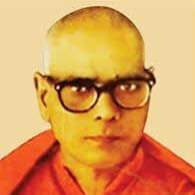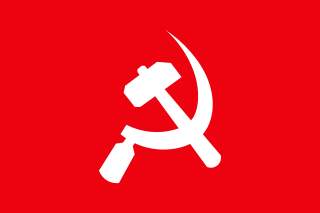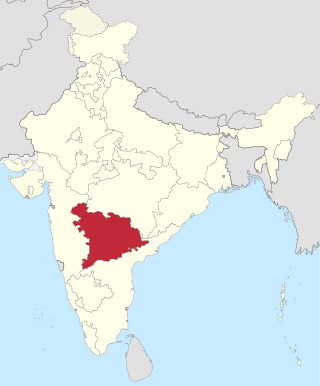Related Research Articles

Hyderabad State was a princely state in the south-central Deccan region of India with its capital at the city of Hyderabad. It is now divided into the present-day state of Telangana, the Kalyana-Karnataka region of Karnataka, and the Marathwada region of Maharashtra in India.

The princely state of Hyderabad was annexed by India in September 1948 through a military operation code-named Operation Polo, which was dubbed a "police action".

Nizam of Hyderabad was the title of the ruler of Hyderabad State. Nizam is a shortened form of Niẓām ul-Mulk, and was the title bestowed upon Asaf Jah I when he was appointed Viceroy of the Deccan by the Mughal Emperor Farrukhsiyar. In addition to being the Mughal Viceroy (Naib) of the Deccan, Asaf Jah I was also the premier courtier of the Mughal Empire until 1724, when he established an independent realm based in Hyderabad, but in practice, continued to recognise the nominal authority of emperor.
Raj Bhavan is the official residence of the governor of Telangana located in the city of Hyderabad, India. It is located at Somajiguda adjacent to Hussain Sagar lake.

Nawab Bahadur Yar Jung was an Indian politician and foremost Muslim leader in the princely state of Hyderabad in British India. He founded All India Majlis-e-Ittehadul Muslimeen and the branches of Khaksars in Hyderabad and was known as a powerful religious preacher. In 1938, he was elected the President of Majlis-e-Ittehadul Muslimeen, a position in which he served till his death.

Mir Osman Ali Khan, Asaf Jah VII was the last Nizam (ruler) of Hyderabad State, the largest state in the erstwhile Indian Empire. He ascended the throne on 29 August 1911, at the age of 25 and ruled the State of Hyderabad between 1911 and 1948, until the Indian Union annexed it. He was styled as His Exalted Highness (H.E.H) the Nizam of Hyderabad, and was widely considered one of the world's wealthiest people of all time. With some estimates placing his wealth at 2% of U.S. GDP, his portrait was on the cover of Time magazine in 1937. As a semi-autonomous monarch, he had his mint, printing his currency, the Hyderabadi rupee, and had a private treasury that was said to contain £100 million in gold and silver bullion, and a further £400 million of jewels. The major source of his wealth was the Golconda mines, the only supplier of diamonds in the world at that time. Among them was the Jacob Diamond, valued at some £50 million, and used by the Nizam as a paperweight.

Paigah family was a noble family from the former Hyderabad State. The family maintained their own court, individual palaces, and a standing army of about fourteen thousand infantry and cavalry troops.

Kasim Razvi was a politician in the princely state of Hyderabad. He was the president of the Majlis-e-Ittehadul Muslimeen party from December 1946 until the state's Annexation in 1948. He was also the founder of the Razakar militia in the state. He held the levers of power with the Nizam of Hyderabad, blocking the possibilities of his accommodation with the Dominion of India.

Mir Laiq Ali was the last Prime Minister of Hyderabad State under the rule of the Nizam, Mir Osman Ali Khan. His official title was "President of the Executive Council of the Nizam of Hyderabad".

Nawab Fazal Nawaz Jung Bahadur was a noted Hyderabadi politician and financier during the period of the Nizam of Hyderabad Mir Osman Ali Khan, Asaf Jah VII.

The Razakars were a paramilitary wing of the Majlis-e-Ittehadul Muslimeen, an Islamic political party in the Hyderabad princely state of British India. Formed in 1938 by MIM leader Bahadur Yar Jung, the organisation expanded considerably during the leadership of Qasim Razvi around the time of the partition of India. Its primary objective was to maintain the rule of the Muslim Nizams of Hyderabad and prevent the accession of Hyderabad to India.

Swami Ramanand Tirtha was an Indian politician, freedom fighter, educator and social activist who led the Hyderabad liberation struggle during the reign of Osman Ali Khan, the last Nizam of Hyderabad State. Swami Ramanand Tirtha was the principal leader of the Hyderabad State Congress. Before taking Sanyasa, his family name was Vyenkatesh Bhagvanrao Khedgikar.

Lieutenant Colonel Saeed ul-Mulk Nawab Sir Muhammad Ahmad Said Khan, Nawab of Chhatari also generally referred to as Nawab of Chhatari was Governor of the United Provinces, Chief Minister of United Provinces, President of the Executive Council of the Nizam of Hyderabad and Chief Scout of India.

Mir Hashim Ali Khan was commandant of the 2nd Lancers, Hyderabad Imperial Service Troops.

The Comrades Association was a communist organization that operated in the State of Hyderabad in India during the rule of the Nizam. It represented the Communist Party of India in Hyderabad State. The Comrades Association played a very influential role in the Andhra Mahasabha. Revolutionary Urdu poets Makhdoom Mohiuddin and Raj Bahadur Gour were among the active figures in the Association. Along with three other groups, the Comrades Association was organized as the Nizam State Communist Committee in 1939, and played an active role in the Telangana Rebellion.
The Hyderabad State Congress was a political party in the princely state of Hyderabad that sought civil rights, representative democracy and the union of Hyderabad with the Republic of India. It opposed the autocratic rule of the Nizam of Hyderabad and the militancy of the Razakars. HSC was formed in 1938.

Hyderabad State was a state in Dominion and later Republic of India, formed after the accession of the State of Hyderabad into the Union on 17 September 1948. It existed from 1948 to 1956. Hyderabad State comprised present day Telangana, Marathwada and Hyderabad-Karnataka
A standstill agreement was an agreement signed between the newly independent dominions of India and Pakistan and the princely states of the British Indian Empire prior to their integration in the new dominions. The form of the agreement was bilateral between a dominion and a princely state. It provided that all the administrative arrangements, existing between the British Crown and the state would continue unaltered between the signatory dominion and the princely state, until new arrangements were made.

Amir-e-Paigah-e-Asman Jahi, Moin-ud-Daula Bahadur Innayath Jung, commonly known as Sir Nawab Muhammed Moin Uddin Khan born at Basheer Bagh Palace in 1891 was an Indian nobleman and member of the Paigah Nobility and the Amir of the Asman Jahi Paigah one of the 3 great Paigahs of Hyderabad State The Paigah Nobility was the second most powerful family in Deccan Hyderabad State maintaining their own court and army bound with Asaf Jahi dynasty by matrimonial relationship, Moin-ud-doula and his father Asman Jah was one of those fortunate individuals to whom it has been given by fate to write their names large in the annals of their country, Moin-ud-doula's father Asman Jah who served as co-regent and Prime Minister of Hyderabad created several marvelous architects throughout the city maintained his army court in his domain Shamshabad, was granted the title of Order of the Indian Empire,

Aiwan-i Begumpet, also known as Chiraan Fort Palace, and Devdi Fareed Nawaz Jung, or Devdi Nazir Nawaz Jung, was built in 1880 by Sir Viqar-ul-Umra, Amir of the Great Paigah Dynasty of Deccan, who served as Prime Minister of Hyderabad. The palace was built after the construction of Falaknuma Palace gifted to the sixth Nizam of Hyderabad Mir Mahbub Ali Khan, Asaf Jah VI. Devdi is one of the complexes in the Paigah Palace residence house of the Paigah Nobility. In the hierarchy of nobles of Hyderabad, the Paigah family ranked immediately next to the ruling family of Nizams.
References
- ↑ Benichou, From Autocracy to Integration (2000), Chapter 7, note 3.
- ↑ "India, Pak keen to settle dispute over Nizam's wealth". 12 April 2008. Archived from the original on 13 July 2012. Retrieved 22 September 2011.
- ↑ "The Nizam's misfortune". May 2008.
- ↑ A. G. Noorani, Jinnah & the Nizam of Hyderabad – A Tragic Liaison, Criterion Quarterly, 20 November 2012.
- ↑ Benichou, From Autocracy to Integration (2000) , Chapter 5: "As Moin Nawaz Jung was reputed to be in favour with the Ittihad, Chhatari hoped that its opposition to reforms would be somewhat lessened."
- ↑ Benichou, From Autocracy to Integration (2000) , Chapter 6: "Sir Walter Monckton [the leader of the delegation] rebuked the Commissioner of Police for his inaction only to get the reply that the Police, if ordered to intervene, would have refused to resist the Muslim crowds.... Did the Police not know at all? Was no report made to Moin Nawaz Jung, the Police Minister, or to the Police Commissioner himself, by the Intelligence Department? Was the Police in league?"
- ↑ Benichou, From Autocracy to Integration (2000) , Chapter 6: "Moin Nawaz Jung pleaded, nevertheless, that discussions be reopened on the basis of the original draft agreement proposed by Hyderabad but this was indignantly refused (ibid., p. 315). It seems, however, since the Kashmir situation had not yet been resolved, that the Hyderabad delegation was merely using delaying tactics in the hope of gaining some advantage should the Kashmir situation worsen for India."
- ↑ Benichou, From Autocracy to Integration (2000) , Chapter 7: "Neither politics nor administration was his metier and in both he took counsel from Moin Nawaz Jung who combined administrative ability with narrowness of political outlook and imagination. He exercised great influence over Mir Laik Ali; in fact it was said that the Prime Minister was keeping his seat warm for his brother-in-law to take over when the moment was propitious."
- ↑ "Benichou, From Autocracy to Integration (2000) , Chapter 7: "In the State, it was considered in some circles that an appeal to the UNO amounted to suicide as it was certain to precipitate India’s armed intervention. Mir Laik Ali went ahead, and announced to the Hyderabad Legislative Assembly (on 4 September 1948) that a delegation headed by Moin Nawaz Jung, would proceed to Lake Success. He [Jung] ended his address with the statement that 'even should the United Nations turn down Hyderabad's appeal, the State would not give up its claim to independence'."
- ↑ "A prince's ransom | the Guardian | guardian.co.uk". TheGuardian.com .